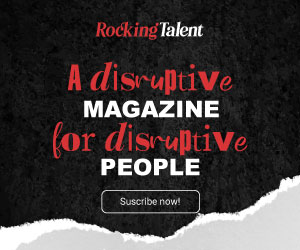When you think of a doctor, what do you imagine?
Male? White?
Let’s go beyond that. When you think about a doctor, what do you envision his home life to be?
Married to a beautiful woman? 3-4 children?
Is he clean shaven? Come from a 2-family home, with a large network?
Mitchell Gold + Bob Williams, a handcrafted, American Made, furniture design company, is the name’s sake of both of its owners. On the podcast, How I Built This, both Bob and Mitchell go into detail about how it was like being gay during a time that being so, and in Gold’s case, Jewish, would result in hostility and even dangerous circumstances. During their interview, they describe how the lack of opportunity to the gay population in the 1950s & 60s pigeonholed them into the design industry.
I don’t think much has changed since then.
Though their story is a tremendous success, given that Mitchell Gold + Bob Williams is one of the most well-known designed furniture company in the country, we will never know if their ingenuity could have been translated somewhere else.
Our biases have negatively implicated employment mobility. We’ve made leaps and bounds of improvement, examples including creating inclusive environments for the non-binary and trans-identified communities, and underrepresented ethnicities. But let’s be honest; it is rare that you can walk into a corporate setting and see someone authentically representing themselves. Banking, one of the most conservative industries that exists, still deny many employees, based on the position, the right to dye their hair.
Surprisingly (though not really), this even applies to startup culture. Leaders have undoubtedly hindered the growth of the people within organizations, simply because we haven’t envisioned them doing a thing. The inability to see an accountant, political analyst, or (enter almost any other profession here), other than the “standard” representation have manifested in a whole host of unfulfilled passions. 34% of all American workers including 46 percent of Black employees and 38 percent of Latinx employees—feel that they aren’t utilizing their full potential. Almost two-thirds (64 percent) of the employees surveyed said they plan to leave their current job with one of the top five reasons being, feeling pigeonholed or stuck in their position.
All humans are inherently biased. It’s part of how our brains are wired. We naturally make snap decisions about people based on things like past experiences, cultural backgrounds, or things we’ve seen on TV or in the news.
Even those of us who pride ourselves on being open-minded fall prey to leadership bias. And this bias at work can have serious repercussions even if we’re not aware of it — especially if we’re not aware of it.
So how can we remedy this?
Today we’ll focus on one aspect I’ll call, “Inclusive Employee Promotion”. We want to ensure that the employees we hire have the ability to move upwards, laterally, or even downgrade (think of the need for decreasing hours, the willingness to learn a new skill in a different field, etc). Here are just a few steps to get us there:
- Be transparent about your hiring and promotion process. This transparency will assure employees that these processes are not biased toward hiring and promotion. If you are proactively recruiting professionals from diverse backgrounds and experiences, being transparent about it will build your employees’ trust in the hiring and promotion processes.
- Make your peer leaders responsible. Ensuring decision-makers are accountable for the organization’s values will demonstrate the importance of an unbiased workplace to the organization’s culture.
- Have a clear criteria for evaluating qualifications and performance. Having such criteria eliminates nearly all possibility that bias will impact the appraisal process. Some companies use blind evaluations so that the employee is represented solely by their work and not their race, gender or anything else.
- Ask for feedback. Include questions about racial bias and the learning and development experience on anonymous employee surveys. You may even consider surveying former employees about their experience to understand what issues they may have faced and what steps might have helped keep them at your organization.
- Expand the options. Use competencies—not personality, leadership style or rigid prerequisites—to assess candidates. Look for gaps in current leadership or teams and proactively seek out diverse candidates—by thinking style, experience, or demographics. Keep a database of employee expressed interest ready and refer to it each time before you make a decision, whether it’s a job assignment, a promotion, or any other career development opportunity. Consider utilizing formal, structured programs such as mentorship, sponsorship, and advocacy (we’ll be exploring some of these in our next newsletter).
With four generations in the workforce, all with differing backgrounds and life and job experiences, human resources and corporate management need to be aware of how performance bias creeps into their workday.
If you’re interested in learning how to unlock the power of the team in your organization to disrupt leadership bias and create more inclusive work environments for everyone, get in touch with us.
Keosha Gibbs-Lucas | Head of Diversity Recruitment at Smithsons





